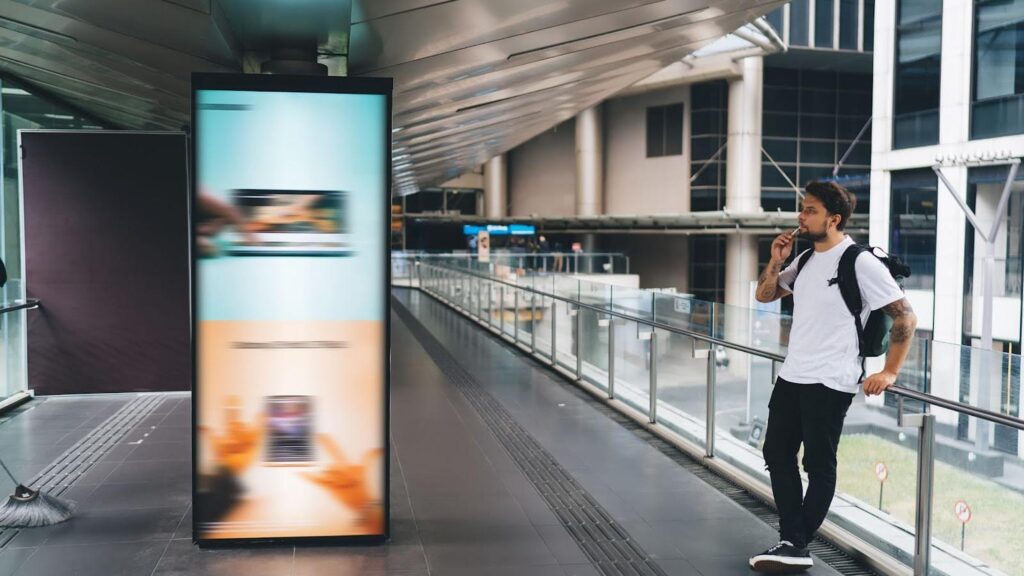How DOOH Advertising Works and Why It Needs a Unified AdOps Strategy

Over the years, we’ve seen brands looking for innovative ways to capture consumer attention. They often go beyond traditional online channels. Digital Out-of-Home (DOOH) advertising is one such powerful medium. It smartly blends the reach of outdoor advertising with the precision of digital targeting. So what exactly is DOOH advertising, and why is it so popular today? Let’s find out in this article. How DOOH Advertising Works? DOOH advertising uses digital screens in public spaces to deliver targeted content to audiences. There is one big difference between DOOH and traditional billboards. DOOH allows you to update messages in real-time. You can even customise them based on the following: Location Time of day Weather conditions Audience demographics. To understand the workings of DOOH better, we need to understand its four core pillars: Programmatic buying: It is an automated process of purchasing digital ad space in real time. It typically uses data-driven algorithms to optimise placement and bidding. Programmatic buying ensures that you can reach your ideal audience at the right moment. Real-time bidding (RTB): Through RTB, advertisers compete for ad slots in milliseconds. This way, ad spend is optimised, ensuring maximum visibility in high-traffic areas. Audience targeting: This relies on data-driven insights, using factors like mobile location data or foot traffic analysis. Ultimately, relevant ads are delivered to specific demographics. It also improves ad effectiveness by ensuring messages reach the right people at the right time. Dynamic content delivery: It allows you to adapt your creatives based on live triggers—such as sports scores, breaking news, etc.. Ultimately, your ads are more engaging and contextually relevant. By combining all these four pillars, DOOH maximises impact, offering you an efficient and flexible way to connect with consumers in public spaces. Challenges in Managing DOOH Campaigns Without a Unified AdOps Strategy Despite the success of DOOH and the ease of managing it, there are some really unique challenges that today’s advertisers face while managing DOOH campaigns: Data fragmentation: DOOH campaigns suffer from fragmented data across different screens and networks. A lack of centralisation makes it difficult to analyse performance holistically. It also prevents ad budgets from being effectively allocated. Tracking and Measurement Challenges: Each DOOH platform operates with its own set of metrics and reporting standards. This often leads to inconsistencies in tracking impressions and engagement. Without a standardised approach, we have seen advertisers struggling to compare performance across different networks. Compliance Risks Across Multiple Locations: Advertising regulations and content restrictions vary across regions. What works in London might not be legal in New York. This adds to the complexity of DOOH campaign management. A disjointed approach increases the risk of non-compliance, potentially leading to legal issues, fines, or ad rejections. Inefficiencies in Scaling Across Platforms: When you manage DOOH campaigns manually across multiple locations, you will often face operational bottlenecks. Without automation and integration, you might end up adjusting creatives and schedules separately for each network. This will bring down your team’s efficiency and limit your ability to scale campaign. Why a Unified AdOps Strategy is Essential for DOOH Advertising? Short answer – to address all the challenges we discussed in the previous section. Now, for the long answer. A unified AdOps strategy centralises data, providing you with a holistic view of campaign performance. This means no more dealing with fragmented insights from different platforms. You can easily optimise placements and targeting for maximum impact. This centralised approach also ensures consistency in messaging. Most importantly, you can track audience engagement more effectively, leading to better campaign refinement. Automation plays a crucial role in streamlining DOOH operations. It reduces the need for manual intervention in ad scheduling and bidding. Even performance monitoring can be done automatically. This means there will be no more inefficiencies that slow down campaign execution and limit your scalability. By integrating automated workflows, you can not only launch and adjust campaigns seamlessly but also ensure that your ads are delivered in the right context all the time. Another key advantage of a unified AdOps strategy is CRM integration. The union allows you to use first-party data for more precise audience targeting. By aligning DOOH campaigns with customer insights, you can deliver personalised and contextually relevant ads. This automatically increases engagement and drives conversions. This integration also helps in retargeting strategies. Ultimately, your DOOH efforts will complement your broader digital marketing initiatives. Finally, a unified AdOps strategy optimises ad spend. It does this by eliminating inefficiencies in budget allocation. Without a strategic framework, you risk overspending on less effective placements. You might even miss opportunities to reach high-value audiences. A data-driven AdOps strategy ensures that your budgets are allocated where they generate the highest return. How Salesforce and AdTech Solutions Enhance DOOH AdOps? Salesforce enhances DOOH AdOps through its array of native tools. For instance, Marketing Cloud helps integrate first-party customer data for precise audience targeting. Similarly, Customer 360 unifies data from multiple touchpoints to deliver hyper-personalised DOOH ads in real time. Salesforce Data Cloud further strengthens targeting by processing vast amounts of audience data. You can even segment viewers based on various aspects, ensuring effective ad placements. Then, we have Salesforce Einstein AI that helps optimise ad bidding and placements by analysing real-time data. When combined with Marketing Cloud advertising, you can activate customer data to retarget audiences across DOOH. There are several other dedicated AdTech solutions integrated with Salesforce that can streamline programmatic DOOH advertising through automation and AI-driven insights. Future Trends in DOOH and AdOps Automation Here are some trends we expect in DOOH and AdOps automation in the coming days: AI-Driven Programmatic Advertising: Artificial intelligence is enhancing DOOH by automating ad placements and optimising bidding strategies. It even enables real-time creative adjustments based on audience behaviour. IoT-Enabled Smart Screens: The Internet of Things (IoT) makes DOOH networks more intelligent. It allows digital screens to interact with user’s mobile devices and sensors. In other words, real-time data sources are used to deliver hyper-contextual ads. 5G for More Dynamic Content Delivery: While 5G has been rolled out in

